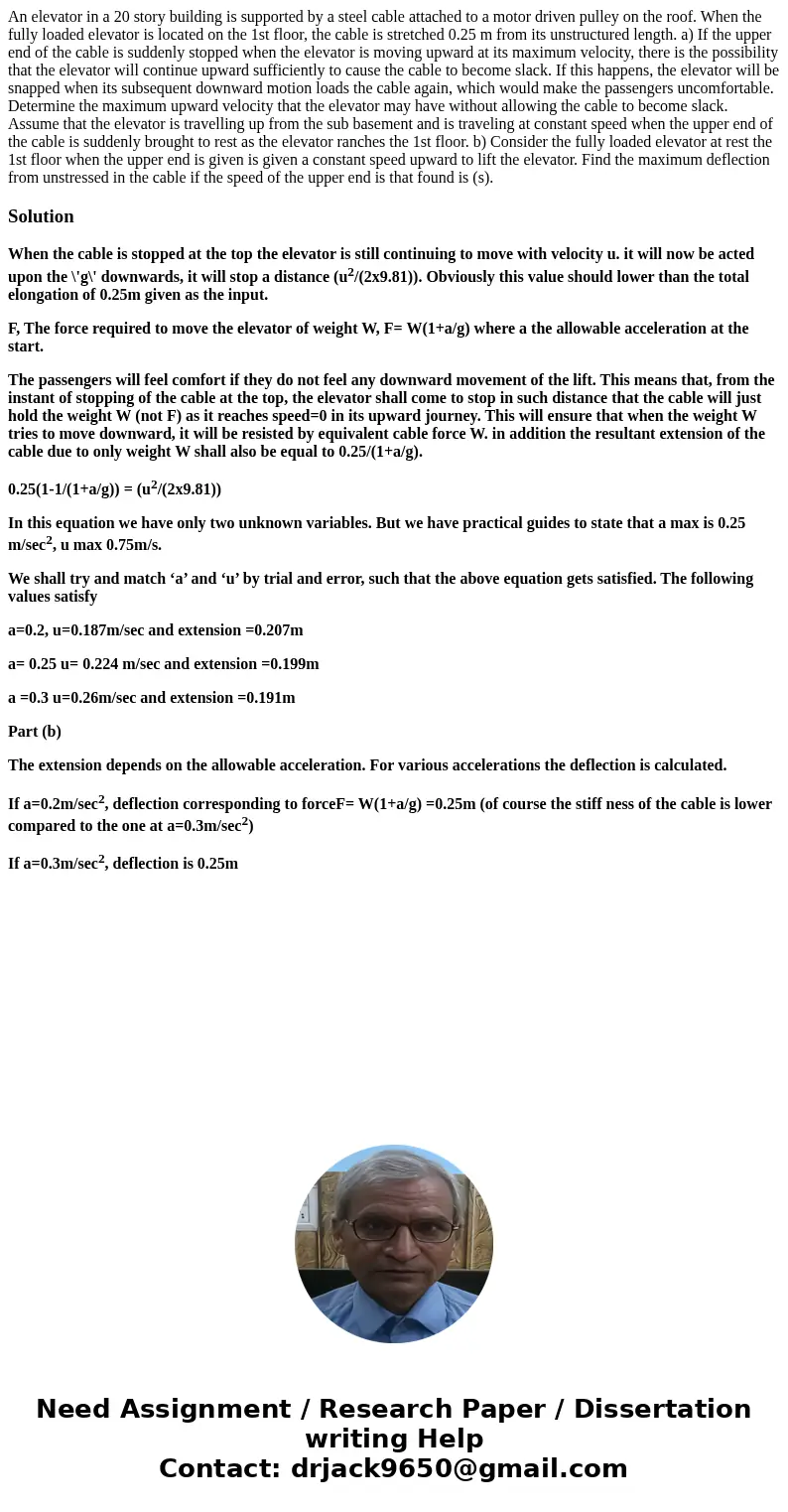An elevator in a 20 story building is supported by a steel c
Solution
When the cable is stopped at the top the elevator is still continuing to move with velocity u. it will now be acted upon the \'g\' downwards, it will stop a distance (u2/(2x9.81)). Obviously this value should lower than the total elongation of 0.25m given as the input.
F, The force required to move the elevator of weight W, F= W(1+a/g) where a the allowable acceleration at the start.
The passengers will feel comfort if they do not feel any downward movement of the lift. This means that, from the instant of stopping of the cable at the top, the elevator shall come to stop in such distance that the cable will just hold the weight W (not F) as it reaches speed=0 in its upward journey. This will ensure that when the weight W tries to move downward, it will be resisted by equivalent cable force W. in addition the resultant extension of the cable due to only weight W shall also be equal to 0.25/(1+a/g).
0.25(1-1/(1+a/g)) = (u2/(2x9.81))
In this equation we have only two unknown variables. But we have practical guides to state that a max is 0.25 m/sec2, u max 0.75m/s.
We shall try and match ‘a’ and ‘u’ by trial and error, such that the above equation gets satisfied. The following values satisfy
a=0.2, u=0.187m/sec and extension =0.207m
a= 0.25 u= 0.224 m/sec and extension =0.199m
a =0.3 u=0.26m/sec and extension =0.191m
Part (b)
The extension depends on the allowable acceleration. For various accelerations the deflection is calculated.
If a=0.2m/sec2, deflection corresponding to forceF= W(1+a/g) =0.25m (of course the stiff ness of the cable is lower compared to the one at a=0.3m/sec2)
If a=0.3m/sec2, deflection is 0.25m

 Homework Sourse
Homework Sourse